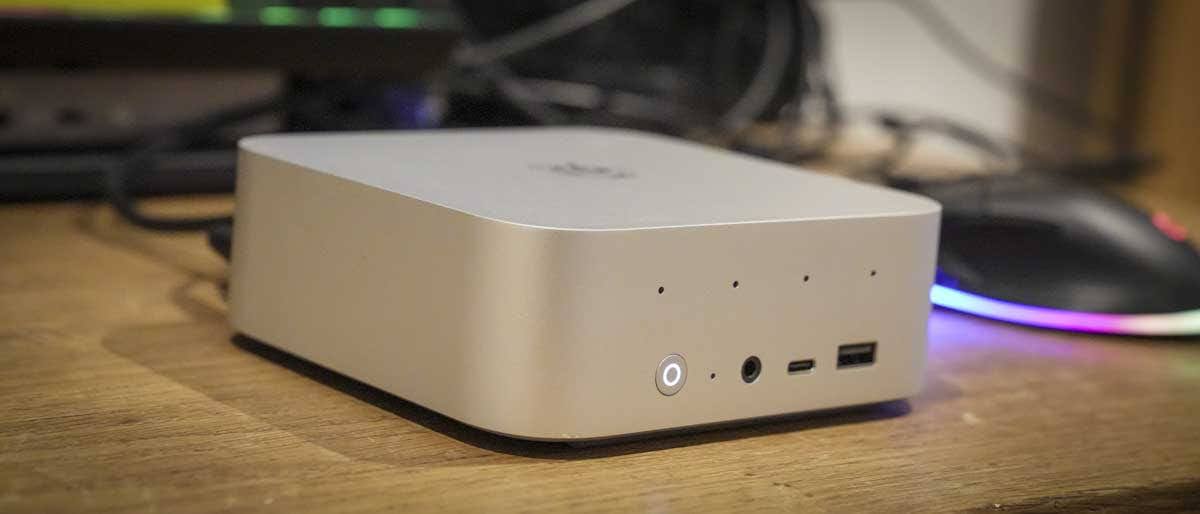TechRadar Verdict
The Beelink SER9 Pro features a striking all-metal case and a powerful feature set that hits the mid-range of mini PCs. In use for all Office as well as mid-level content creation, this machine has the power, with plenty of internal upgrade options for storage. However, it's the AI voice kit that incorporates a mic and speakers to better aid vocal pickup for ChatGPT and other AI language models that makes this machine stand-out.
Pros
- +
Compact form factor
- +
High-performance computing
- +
AI Voice kit
Cons
- -
Limited upgrade
- -
Premium price tag
Why you can trust TechRadar
Beelink SER9 Pro: 30-second review
As mini PCs go, the Beelink SER9 Pro has a distinctly premium feel from the outset, with the sleek all-metal design of the casing and minimalistic aesthetics that, while understated, also gives the impression that this machine is going to back the looks with performance.
Sure enough, once plugged in and the usual Windows 11 Pro setup process is complete, the machine doesn't fail to impress, with all native Windows 11 Pro apps running smoothly, and likewise running Microsoft Office applications proves just how well balanced this machine is as an office solution.
Through the test, as I started to push the processing with some video and image editing in Premiere Pro, DaVinci Resolve and Adobe Photoshop, I was impressed with the speed of edits, especially in the Adobe apps with the AI enhancement from the CPU helping with increased generative expansion and extension features.
While the overall processing performance of the machine was impressive, and fears that the 32GB of LPDDR5X‑6400 RAM would be a little limiting, in reality, the additional speed offered by the soldered RAM was more than enough for handling all HD and some light 4K editing in all apps, although render times in DaVinci Resolve were notably slower.
One issue I did have with the machine during content creation was the lack of SSD capacity. While 1TB installed is relatively large, once 4K footage was transferred from the CFExpress Type-B card to the internal storage, the SSD started to fill up quickly. Usually, this would require an SSD upgrade if you were thinking of using the machine for content creation. However, here I was able to pop in a 4TB Samsung 9100 Pro into the second M.2 slot.
Having dual M.2 slots instantly enhances the flexibility and use of this machine, but it's also worth mentioning that at the same time I've been reviewing the SER9 Pro, I've also had the Mate SE and expansion dock that sits above or below the machine, expanding the available ports and also adding the ability to add an additional two M.2 drives. This means if you buy the combo, you can fit up to 8TB of PCIe 4.0 M.2 SSD in the machine itself and then expand this with an additional 8TB in the Mate SE, giving a total of 16TB, more than enough for even the most serious content creator.
As the test progressed, I was impressed with the general performance, with the speed and reactions of Windows and Microsoft Office apps being exceptionally fast. Content creation was also speedy, with the only real constraints coming when playing some of the higher-end games. Here, settings needed to be dropped slightly, but even so, gaming performance was good.
Sign up to the TechRadar Pro newsletter to get all the top news, opinion, features and guidance your business needs to succeed!
Finally, where this machine really excels is with the AI audio kit. This isn't software, but hardware enhancements in the form of a mic array on the front of the machine and dual internal speakers. The speakers are handy, but the mics are AI-enhanced, meaning that if you dictate to an application such as ChatGPT, it's better able to separate the vocals from background noise, and likewise in meetings, it can again be used (with the right prompts) to record minutes. Although I couldn't quite get it to differentiate between different voices - for that, you'll need something like the Plaud NotePin. This doesn't take away from what is one of the best mini PCs if you want a unit that's AI-ready, even with the slightly premium pricing against similar models.
Beelink SER9 Pro: Price and availability
- How much does it cost? $519
- When is it out? Now
- Where can you get it? Widely available
At present, the Beelink SER9 Pro is listed for $519 directly from the Beelink website. There are two options listed, the SER9 Pro with the mics and speakers, which is the one I’ve looked at in this review, and the standard SER9, which is available at the same price. The SER9 Pro is also available from many major online retailers, including Amazon.com.
- Value: 4 / 5
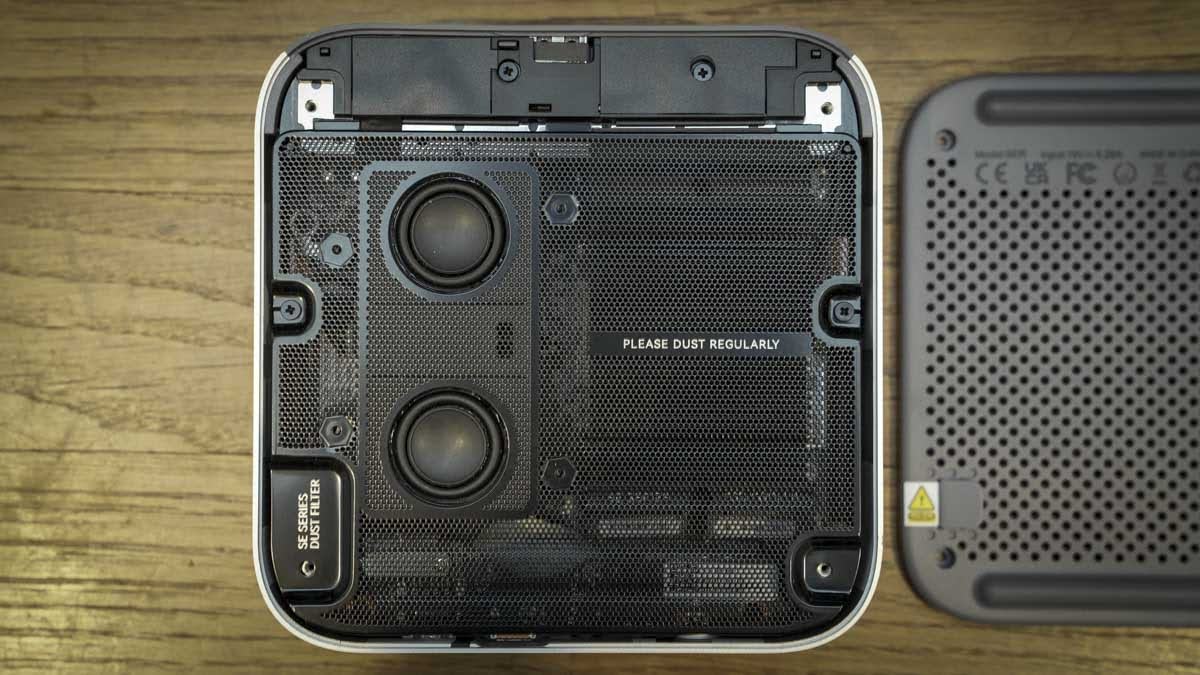
Beelink SER9 Pro: Specs
CPU: AMD Ryzen 7 H 255
Graphics: AMD Radeon 780M
RAM: 32 GB LPDDR5X 6400 MT/s (soldered)
Storage: 1 TB (pre-installed) + dual M.2 2280 PCIe 4.0 slots (expandable up to 8 TB)
Front Ports: CLR CMOS, 3.5 mm Audio Jack, USB3.2 Gen 2 Type-C, USB3.2 Gen 2 Type-A, Microphone Array
Rear Ports: DC in, USB4, HDMI 4K 249 Hz, 3.5mm Audio Jack, 2 x USB2.0, DP1.4 4K 240Hz, LAN 2.5G, USB3.2 Gen 2
Connectivity: WiFi, Bluetooth 5.2
Audio: Built-in dual speakers + built-in microphone array (360° pickup)
Camera: N/A
Size: 135 × 135 × 44.7 mm
Weight: 780g
OS Installed: Windows 11 Pro
Accessories: HDMI cable, power adapter
Beelink SER9 Pro: Design
The Beelink SER9 Pro follows similar design lines to other premium Mini PCs and reflects the style that I’ve seen from previous Beelink Mini PCs, including the SER9 (see my review here). However, with this Pro version of the design, not only has the internal hardware taken a step up, mainly to incorporate an AI-ready CPU, but there are a few notable additions that make this a far more serious machine, even with the price placing it firmly in the mid-range.
The design of the machine, with the all-metal casing and venting, also means that through the test, and even when under load, the fans, while kicking in to keep things cool, remained relatively quiet in comparison with many other Mini PCs.
The two notable additions are the incorporation of the mic array on the front and the inclusion of dual internal speakers. The mics are all part of the AI Voice kit integration, which is driven by hardware and integrates with AI apps and services such as ChatGPT.
Size-wise, the Beelink SER9 Pro follows the rough standard sizes for the form factor, measuring in at 135 x 135 x 44.7mm and weighing 780g, again, roughly average for premium-level Mini PCs.
The exterior of the machine is simple, with an all-metal finish on the top and sides, with just the ports and Beelink logo breaking the silver finish. On the front of the machine, there's a decent array of ports, and it’s good to see that there’s both a USB3.2 Gen 2 Type-A and Type-C port. It’s just a shame that they’ve settled on the USB3.2 Gen 2 rather than going all the way with a more useful USB4.
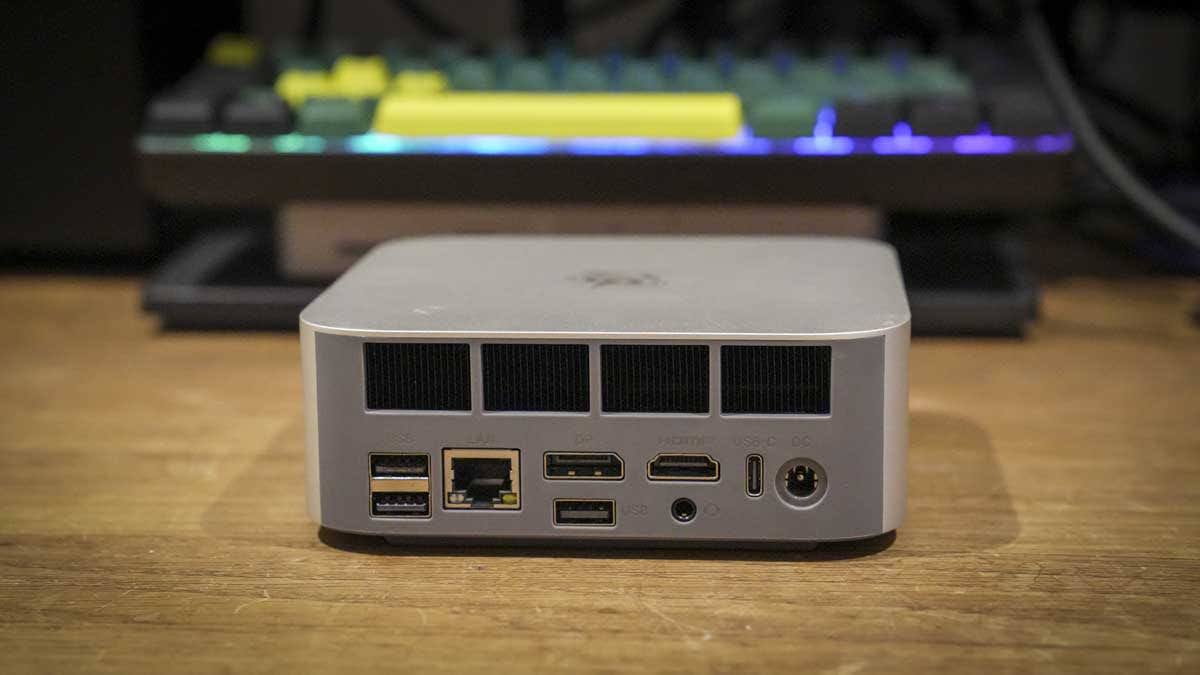
Joining the USB ports are a standard 3.5mm audio jack, a CLR CMOS, and the main power button.
Around the back is the DC in, this is a 65W machine, then a USB4 port, HDMI, 3.5mm Audio, 2 x USB2.0 Type-A, DP1.4, LAN 2.5G and a USB3.2 Gen 2.
One note on the design of the rear of the machine is that the USB 4.0 port is positioned vertically, while all other ports are horizontal. The reason for this is so that the short link cable to the Mate SE can be installed if needed.
Alongside the ports at the back is a substantial amount of venting to enable airflow through the system. Flipping the machine over reveals a plastic base and again plenty of venting to enable more airflow.
- Design: 4.5 / 5
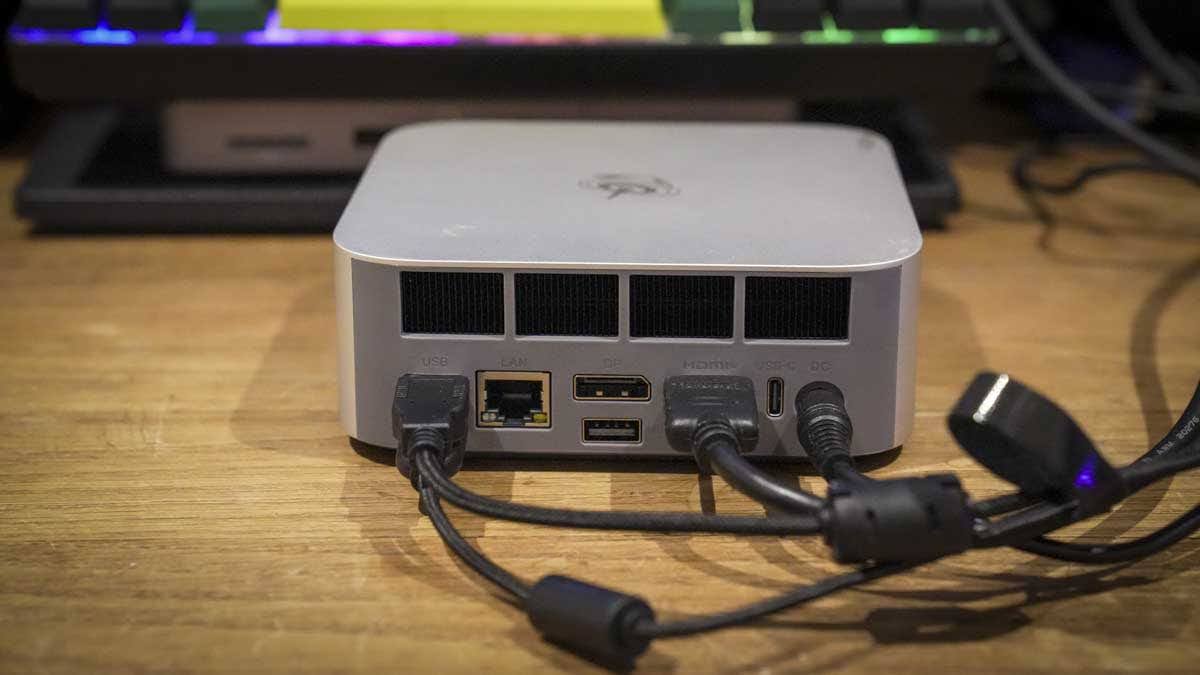
Beelink SER9 Pro: Features
Checking over the specifications of the machine, what’s noticeable is just how well balanced it all seems. Beelink has aimed this machine at the mid-price point, which essentially enables the CPU, GPU and storage to breathe.
One of the other features of the design, and something that has been developed to counter an issue with these high-powered machines, is a dust mesh on the base. This essentially helps to stop dust from being sucked into the system, something that can be a real issue with these compact machines that require maximum airflow.
At the heart of the machine is an AMD Ryzen 7 H 255 CPU, which features an integrated AMD Radeon 780M, now a tried and tested solution that offers decent processing power for Windows, Office, creativity and mid-level gaming.
An interesting choice that we’re starting to see on more machines of this type, and something that is now common in the field of laptops, is the soldered RAM. Here, there are four 8GB chips of LPDDR5X 6400MT/s, with a total of 32GB. While this may seem relatively low as there’s no ability to upgrade in the future, for most, this level should suffice.
Another interesting point is the dual PCIe 4.0 M.2 2280 slots, with one being filled with the SSD that ships with the machine. However, if you want to upgrade, then two 4TB sticks can be inserted, meaning that while the machine initially ships with a 1TB drive, you can boost this to a maximum of 8TB, or configure as a software RAID if you need a boost in the already impressive storage speed.
One of the areas of this machine that does stand out and starts to separate it from other Mini PCs is the sound and vision.
The sound is the most impressive feature, with an array of four mics built into the front of the machine. These simply look like four small holes. These small mics are able to pick up 360º sound up to 5m, and with backing from a hardware AI chip that helps to separate vocals from background noise. As this is hardware-supported rather than software, it automatically works with any application you wish to use with it.
Also supporting the sound are the dual built-in speakers that feature DSP (Digital Signal Processor) enhancement. While these are small, they put out a decent volume and quality, which is more than good enough for listening to presentations, being used for conference calls and some multimedia playback. Essentially, think of these as similar to those you would find in most mid to high-end laptops.
Around the body of the machine, there are plenty of connectivity options, with almost a full set of USB ports, ranging from USB2.0 through to the latest USB4.0, enabling decent compatibility. One note on this is that most portable SSDs at present are USB 3.2 Gen 2x2, which is the one interface that isn’t available.
Alongside the standard set of ports, there’s a 2.5G LAN port, WiFi 6 and Bluetooth 5.2, all tried and tested options rather than the latest generation. With the array of ports, there’s the ability to plug in up to three 4K monitors via USB4.0, HDMI and DP1.4.
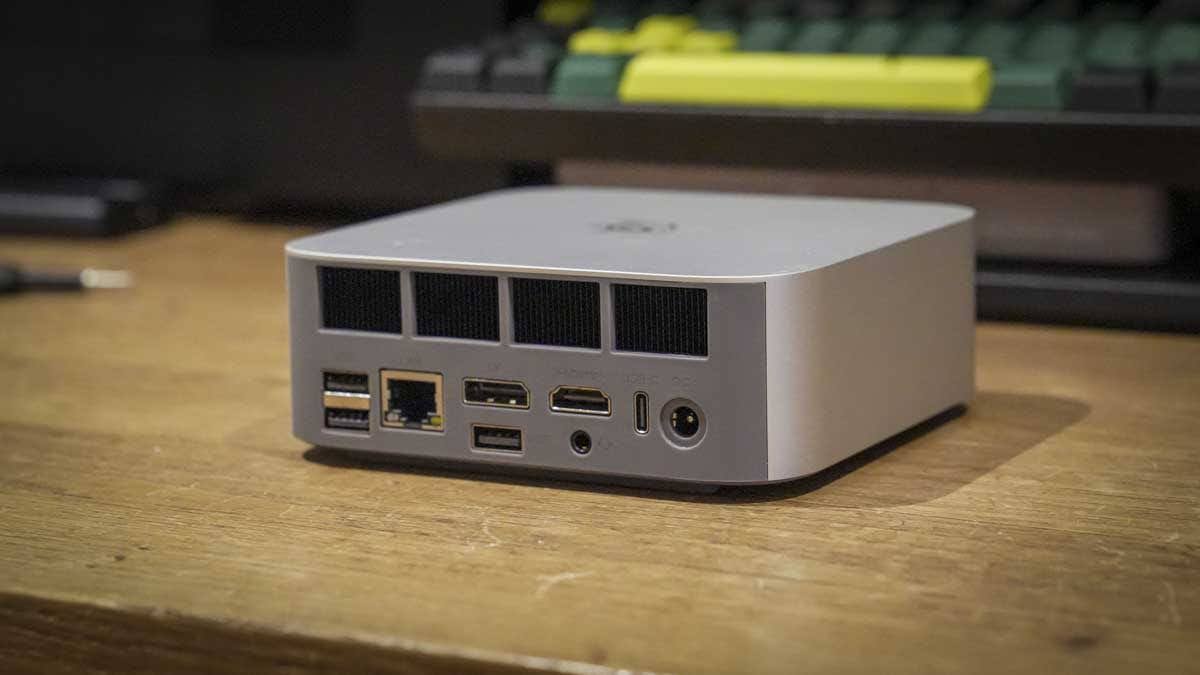
- Features: 4 / 5
Beelink SER9 Pro: Performance
CrystalDiskMark Read: 5185.72 MB/s
CrystalDiskMark Write: 4733.12 MB/s
Geekbench CPU Multi: 12,711
Geekbench CPU Single: 2,548
Geekbench GPU: 29,604
PCMark Overall: 6,763
Cinebench CPU Multi: 16,354
Cinebench CPU Single: 1,732
Fire Strike Overall: 8,291
Fire Strike Graphics: 8,894
Fire Strike Physics: 27,633
Fire Strike Combined: 3,242
Time Spy Overall: 3,440
Time Spy Graphics: 3,084
Time Spy CPU: 9,961
Wild Life Overall: 18,454
Steel Nomad Overall: 528
Windows Experience Overall: 8.3
After reviewing the feature set, it showed that while the size and form factor of the Beelink SER9 Pro are standard for a Mini PC, Beelink are trying to carve out a new niche on the market. Essentially, it provides a feature-rich Mini PC with the features that we’ve come to expect from a laptop, just without the screen.
The approach makes sense, and actually, the more I used the machine, the more the workflow aspects for business life made sense. The fact that it’s a Mini PC rather than a laptop instantly makes it a better solution for desktop working, as you can easily connect it to a monitor. However, unlike most other Mini PCs and even desktops, there’s no need to search around for a mic or connect it to speakers, as that’s all built in and offers very decent quality. The only things you’re missing are the webcam, monitor, keyboard and mouse of course.
In use as an everyday machine, the speed at which it was able to handle Windows and all Office apps was once again just about as good as it gets, with no hesitations and all apps opening quickly and running alongside each other without issue.
What I really liked, however, was just how well the voice-to-text features worked, with the transcription from meetings and note dictation working well, with almost 100% accuracy compared with running a similar test using an external mic and speakers.
While I liked the convenience of the integrated speakers, personally, I would still want to link in some decent monitor speakers for work, but if you don’t have the desk space for these, then the onboard option is great to have.
As the machine arrived with a 1TB SSD, I wanted to boost the internal storage due to needing to edit some 4K video, so I installed another SSD, a 4TB Samsung 9100 Pro, which was instantly recognised on reboot and enabled a good volume of ultra-fast internal storage for video content. While the drive is PCIe 5.0, it still offered exceptional speeds in the slower PCIe 4.0 slot.
A quick note on the Mate SE, as I was testing this at the same time: in that unit I installed two 1TB drives , one being a 1TB PCIe 5.0 SSD, and then linked that into the machine using the USB4.0 port. What stood out here is just how fast the connected storage was, with that USB4.0 interface enabling transfer rates of up to 4,000MB/s. In this test, the external SSD still enabled a transfer rate of 3368.86 MB/s.
Having the additional storage installed, I then tested out a few creative apps with some footage shot on the Canon EOS R5 C. This instantly highlighted the speed of the connecting ports, with 70 GB of video data transferring to the internal SSD in less than a minute using the OWC USB4.0 card reader.
Starting the video testiing with DaVinci Resolve, the Beelink SER9 Pro was able to handle an initial edit of 4K video. However, the timeline was a little sluggish, and the output render was lengthier than I expected. Switching to Full HD footage, however, was well within the machine’s abilities.
Interestingly, switching to Premiere Pro, there was a noticeable increase in the performance, with the machine coping well with moderately complex edits, although again, I kept the editing relatively light, with a base grade to correct and stylise the colours.
As expected, lightening the load on the processing, I switched to Photoshop and tried a few of the generative expand features. Here, the processing was fast, although, as ever, the cloud processing definitely seemed to handle the application of the expansion far better than the internal processing. This is, however, an Adobe software issue rather than a problem with this machine.
Having run through the creative apps, from DaVinci Resolve, where it struggled, to Premiere Pro and CapCut, where this machine took the edits in its stride, it quickly showed its strengths. Essentially, as long as you’re using this machine for shorter video edits without too much complexity in effects and transitions, it’s exceptionally good.
The area of interest for this machine is, of course, the AI Audio Toolkit, which, in use, you can’t interact with, just like the fact that you can't really interact with the Ai processor without going into development, the chip is just part of the system. However, testing the mic array by dictating, using it in voice call meetings with applications from Word to ChatGPT, and using the voice-to-text options, I was impressed with the clarity of the content it was able to transcribe.
Likewise, when just recording audio, the clarity of the pickup was good, and while there was background noise from the open window and the street outside, the machine did a great job at automatically isolating the vocals without making it sound overly fake.
The final test was to push the processor and GPU with a round of gaming. Here I tested the usual set of games — Indiana Jones and the Great Circle, which, once the settings were dropped, was relatively good and playable; likewise, Hogwarts Legacy, while Dirt Rally was excellent.
The gaming experience was generally good, and, unlike some of the other high-performance Mini PCs I have seen recently, the gameplay over a sustained period was good.
- Performance: 4 / 5
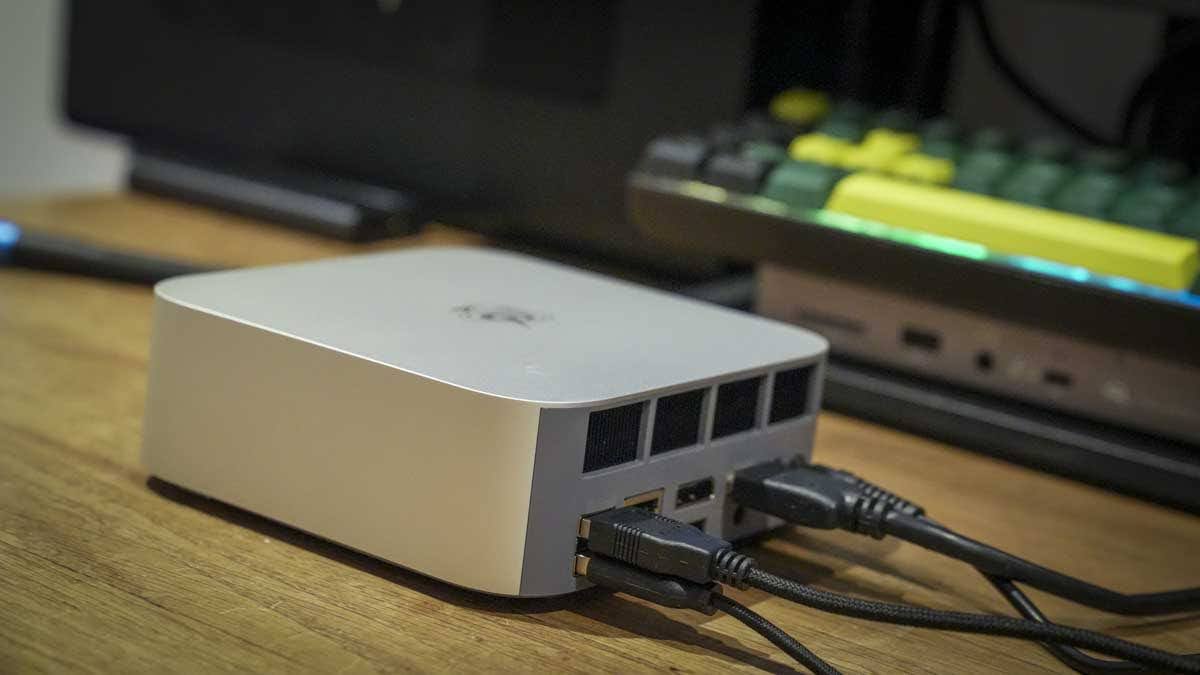
Beelink SER9 Pro: Final verdict
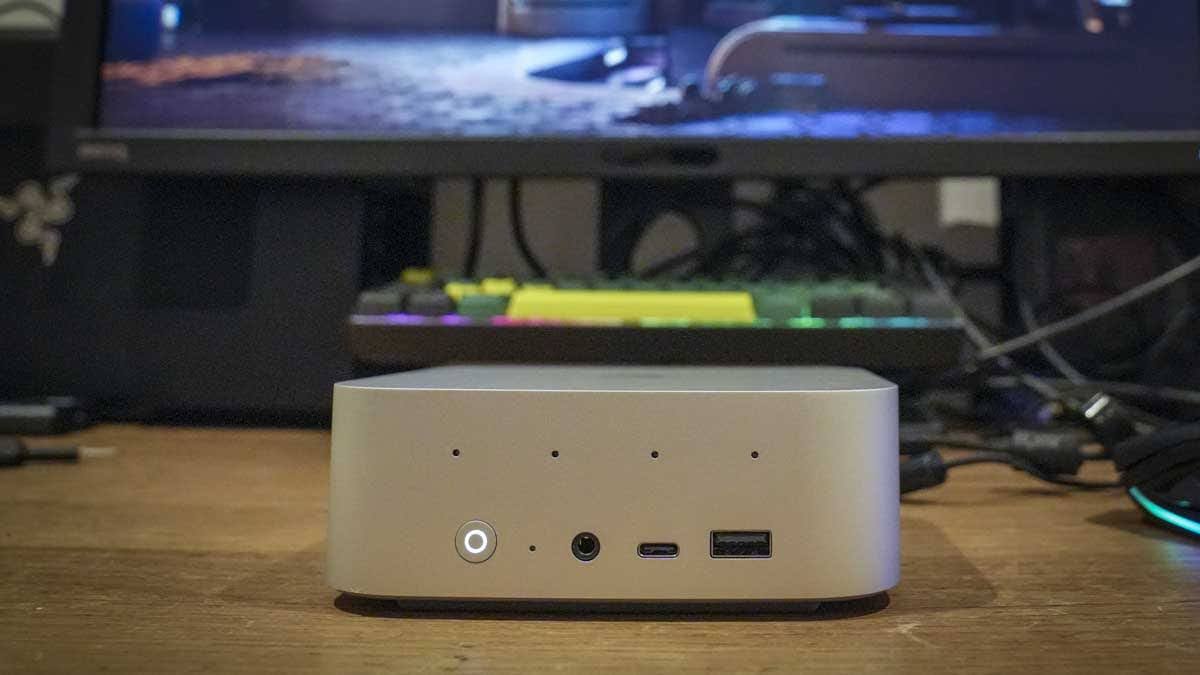
At the end of the performance test, the machine proved to be exceptionally well-suited to the office environment. The small, stylish design and ability to boost the internal storage to 8TB, with the option via the Mate SE to boost that further with an additional 8TB, make this a great option.
The feature for me that really stood out was the voice AI Toolkit. Firstly, this is a feature that separates this machine from others in a crowded market and offers something a little different.
In use, the audio AI was just integrated into the standard system, so the only way that you actually know it’s working is if you compare the audio you record or dictate with another device, it simply cleans the vocals and isolates them from background noise.
When this mic array is used with ChatGPT or another platform for dictation, there did seem to be a pickup in accuracy, and through online meetings, my audio was, after asking others in the session, said to be clean and clear.
While this is a mid-level mini PC, the performance and premium quality of the build make it a good solution for a wide range of uses, from straight office work where the power will make light work of Office and most web browser applications, to content creation (as long as you’re not looking to edit RAW 4K footage), to social media work and a good touch of gaming.
While the processor is lower-specced than some of the other Mini PCs that I have tested recently, the power of the CPU and GPU combo, combined with extremely effective cooling, did actually make for a decent gaming experience with most games tried, as long as the settings are reduced.
This mini PC already has a great deal to offer, I would have preferred an option with 64GB of RAM as well as the 32GB, but in reality, it seemed to have enough clout to handle most edits that I threw at it.
Then, when you also look at the upgrade options, with the expansion of up to 8TB of internal storage, and the option to extend to a further 8TB through the Mate SE, it all suddenly becomes a very interesting proposition.
Should I buy a Beelink SER9 Pro?
Value | A decent amount of power and a well-balanced machine for the price | 4 |
Design | Compact premium design with expansion options where it counts | 4.5 |
Features | Decent combination of features, although fewer of the older USB interfaces and more USB4 would have been appreciated | 4 |
Performance | Well balanced across the board and consistent for all forms of work and games | 4 |
Overalls | Excellent Mini PC choice for everyday use with a good amount of cooling and excellent reliability | 4.5/5 |
Buy it if...
You want a compact office PC
You want a powerful PC for your home office, multiple monitors, and good performance in a small form factor.
You like a space‑saver workstation
You need a workstation for content creation (video editing, photo editing, streaming), but don’t have space for a full tower.
Don't buy it if...
You're running heavy GPU workloads
You plan to use ultra-high-end gaming or 3D rendering that needs a discrete GPU — this Mini‑PC, while powerful, won’tmatch a full desktop GPU.
Upgrade flexibility is needed
You want to upgrade CPU/GPU over time. Since this has soldered RAM and an integrated GPU, your flexibility is limited.
Alastair is a photographer, filmmaker and tech writer who has been working in the publishing industry since the late 1990s. For more than 25 years he has covered photography, video and technology across Future's photography, technology and gaming brands. He runs a photography and video production company and lectures in TV and film. He can usually be found testing mini PCs or prototyping and prop building with the aid of 3D printing.
You must confirm your public display name before commenting
Please logout and then login again, you will then be prompted to enter your display name.
